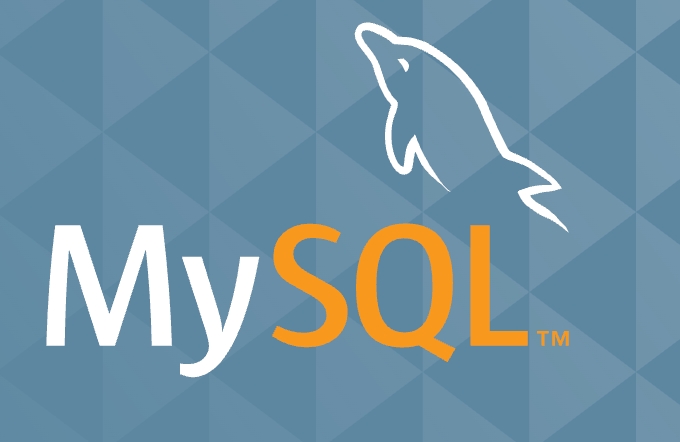MySQL and Kubernetes: Deploying StatefulSets for Scalability
Aug 01, 2025 am 07:23 AMStatefulSets is suitable for deploying MySQL because it provides stable network identity and persistent storage. Each Pod has an independent host name (such as mysql-0, mysql-1) for easy master-slave configuration, combined with Headless Service to implement DNS resolution, and each Pod binds a PVC to ensure data durability; the deployment steps include creating a Headless Service, defining StatefulSets, configuring environment variables, and using volumeClaimTemplates; in terms of storage, each Pod needs to allocate an independent PVC, selecting a suitable StorageClass, and ensuring that the data directory is mounted to a persistent volume; if it is highly available, you need to manually configure master-slave replication or use Operator, MySQL cluster scheme and other supplementary cluster functions.

The combination of MySQL and Kubernetes is a common requirement in many modern application architectures. StatefulSets is a controller specially used in Kubernetes to manage stateful applications. It is used to deploy MySQL, which can not only ensure the persistence of data, but also achieve certain scalability. But in actual operation, there are several key points that need attention.

1. Why StatefulSets are suitable for MySQL
As a relational database, MySQL usually requires stable network identification and persistent storage, which is the advantage of StatefulSets.
- Each Pod has a stable host name (such as mysql-0, mysql-1), which is convenient for master-slave configuration or cluster discovery.
- Combined with Headless Service, DNS resolution can be implemented to specific pods, suitable for master-slave switching or client connection.
- Each Pod corresponds to a PVC (PersistentVolumeClaim), the data is independent and will not be lost due to the restart of the Pod.
So, if you plan to deploy multiple MySQL instances on Kubernetes and want them to stay stateful and run independently, StatefulSets is a more suitable option than Deployment.

2. How to configure MySQL StatefulSet
The core steps for deploying MySQL StatefulSet include:
- Create a headless service for network identification
- Define StatefulSet and specify volumeClaimTemplates
- Set appropriate environment variables, such as MYSQL_ROOT_PASSWORD
- If you need a master-slave architecture, you also need to configure the initContainers or sidecar container for initialization
Here is a simplified version of YAML structure:

apiVersion: v1
kind: Service
metadata:
name: mysql
spec:
Ports:
- port: 3306
clusterIP: None
---
apiVersion: apps/v1
kind: StatefulSet
metadata:
name: mysql
spec:
serviceName: mysql
replicas: 3
selector:
matchLabels:
app: mysql
template:
metadata:
labels:
app: mysql
spec:
containers:
- name: mysql
image: mysql:8.0
env:
- name: MYSQL_ROOT_PASSWORD
value: "yourpassword"
Ports:
- containerPort: 3306
volumeMounts:
- name: mysql-data
mountPath: /var/lib/mysql
Volumes:
- name: mysql-data
persistentVolumeClaim:
claimName: mysql-pvcNote: This example is a single node configuration. If you want to be a master or slave, you need additional configuration scripts or use Operator.
3. Storage and persistence are key
Each Pod of the StatefulSet requires its own storage volume, which is usually defined by volumeClaimTemplates . This way, each Pod will automatically create a PVC when it starts.
- PVC StorageClass should choose the appropriate type according to your cluster environment (such as AWS's gp2, local storage, etc.)
- If you use cloud vendor services, be careful about the availability zone limitations of PVC
- Do not use emptyDir, otherwise the data will be lost after the Pod is deleted.
In addition, MySQL's data directory /var/lib/mysql must be mounted to a persistent volume, otherwise restarting the pod will cause data loss.
4. Cluster mode vs single instance deployment
Although StatefulSet can deploy multiple MySQL Pods, there is no automatic replication or clustering mechanism between them by default. That is, if you deploy three pods, it does not mean that they form a master-slave or InnoDB Cluster.
If you need high availability or automatic failover:
- You can manually configure master-slave replication (for example, use initContainer to determine whether it is a master or slave)
- Or use MySQL Operator, such as the MySQL Operator for Kubernetes provided by Oracle
- You can also consider using a solution like Percona XtraDB Cluster or Vitess
Basically that's it. StatefulSet provides a stable foundation, but MySQL cluster configuration needs to be supplemented according to business needs. Don't forget to test data persistence and network accessibility when deploying, these are the places where problems occur.
The above is the detailed content of MySQL and Kubernetes: Deploying StatefulSets for Scalability. For more information, please follow other related articles on the PHP Chinese website!

Hot AI Tools

Undress AI Tool
Undress images for free

Undresser.AI Undress
AI-powered app for creating realistic nude photos

AI Clothes Remover
Online AI tool for removing clothes from photos.

Clothoff.io
AI clothes remover

Video Face Swap
Swap faces in any video effortlessly with our completely free AI face swap tool!

Hot Article

Hot Tools

Notepad++7.3.1
Easy-to-use and free code editor

SublimeText3 Chinese version
Chinese version, very easy to use

Zend Studio 13.0.1
Powerful PHP integrated development environment

Dreamweaver CS6
Visual web development tools

SublimeText3 Mac version
God-level code editing software (SublimeText3)

Hot Topics
 Establishing secure remote connections to a MySQL server
Jul 04, 2025 am 01:44 AM
Establishing secure remote connections to a MySQL server
Jul 04, 2025 am 01:44 AM
TosecurelyconnecttoaremoteMySQLserver,useSSHtunneling,configureMySQLforremoteaccess,setfirewallrules,andconsiderSSLencryption.First,establishanSSHtunnelwithssh-L3307:localhost:3306user@remote-server-Nandconnectviamysql-h127.0.0.1-P3307.Second,editMyS
 Performing logical backups using mysqldump in MySQL
Jul 06, 2025 am 02:55 AM
Performing logical backups using mysqldump in MySQL
Jul 06, 2025 am 02:55 AM
mysqldump is a common tool for performing logical backups of MySQL databases. It generates SQL files containing CREATE and INSERT statements to rebuild the database. 1. It does not back up the original file, but converts the database structure and content into portable SQL commands; 2. It is suitable for small databases or selective recovery, and is not suitable for fast recovery of TB-level data; 3. Common options include --single-transaction, --databases, --all-databases, --routines, etc.; 4. Use mysql command to import during recovery, and can turn off foreign key checks to improve speed; 5. It is recommended to test backup regularly, use compression, and automatic adjustment.
 Analyzing the MySQL Slow Query Log to Find Performance Bottlenecks
Jul 04, 2025 am 02:46 AM
Analyzing the MySQL Slow Query Log to Find Performance Bottlenecks
Jul 04, 2025 am 02:46 AM
Turn on MySQL slow query logs and analyze locationable performance issues. 1. Edit the configuration file or dynamically set slow_query_log and long_query_time; 2. The log contains key fields such as Query_time, Lock_time, Rows_examined to assist in judging efficiency bottlenecks; 3. Use mysqldumpslow or pt-query-digest tools to efficiently analyze logs; 4. Optimization suggestions include adding indexes, avoiding SELECT*, splitting complex queries, etc. For example, adding an index to user_id can significantly reduce the number of scanned rows and improve query efficiency.
 Handling NULL Values in MySQL Columns and Queries
Jul 05, 2025 am 02:46 AM
Handling NULL Values in MySQL Columns and Queries
Jul 05, 2025 am 02:46 AM
When handling NULL values ??in MySQL, please note: 1. When designing the table, the key fields are set to NOTNULL, and optional fields are allowed NULL; 2. ISNULL or ISNOTNULL must be used with = or !=; 3. IFNULL or COALESCE functions can be used to replace the display default values; 4. Be cautious when using NULL values ??directly when inserting or updating, and pay attention to the data source and ORM framework processing methods. NULL represents an unknown value and does not equal any value, including itself. Therefore, be careful when querying, counting, and connecting tables to avoid missing data or logical errors. Rational use of functions and constraints can effectively reduce interference caused by NULL.
 Understanding the role of foreign keys in MySQL data integrity
Jul 03, 2025 am 02:34 AM
Understanding the role of foreign keys in MySQL data integrity
Jul 03, 2025 am 02:34 AM
ForeignkeysinMySQLensuredataintegritybyenforcingrelationshipsbetweentables.Theypreventorphanedrecords,restrictinvaliddataentry,andcancascadechangesautomatically.BothtablesmustusetheInnoDBstorageengine,andforeignkeycolumnsmustmatchthedatatypeoftherefe
 Resetting the root password for MySQL server
Jul 03, 2025 am 02:32 AM
Resetting the root password for MySQL server
Jul 03, 2025 am 02:32 AM
To reset the root password of MySQL, please follow the following steps: 1. Stop the MySQL server, use sudosystemctlstopmysql or sudosystemctlstopmysqld; 2. Start MySQL in --skip-grant-tables mode, execute sudomysqld-skip-grant-tables&; 3. Log in to MySQL and execute the corresponding SQL command to modify the password according to the version, such as FLUSHPRIVILEGES;ALTERUSER'root'@'localhost'IDENTIFIEDBY'your_new
 Calculating Database and Table Sizes in MySQL
Jul 06, 2025 am 02:41 AM
Calculating Database and Table Sizes in MySQL
Jul 06, 2025 am 02:41 AM
To view the size of the MySQL database and table, you can query the information_schema directly or use the command line tool. 1. Check the entire database size: Execute the SQL statement SELECTtable_schemaAS'Database',SUM(data_length index_length)/1024/1024AS'Size(MB)'FROMinformation_schema.tablesGROUPBYtable_schema; you can get the total size of all databases, or add WHERE conditions to limit the specific database; 2. Check the single table size: use SELECTta
 Handling character sets and collations issues in MySQL
Jul 08, 2025 am 02:51 AM
Handling character sets and collations issues in MySQL
Jul 08, 2025 am 02:51 AM
Character set and sorting rules issues are common when cross-platform migration or multi-person development, resulting in garbled code or inconsistent query. There are three core solutions: First, check and unify the character set of database, table, and fields to utf8mb4, view through SHOWCREATEDATABASE/TABLE, and modify it with ALTER statement; second, specify the utf8mb4 character set when the client connects, and set it in connection parameters or execute SETNAMES; third, select the sorting rules reasonably, and recommend using utf8mb4_unicode_ci to ensure the accuracy of comparison and sorting, and specify or modify it through ALTER when building the library and table.






